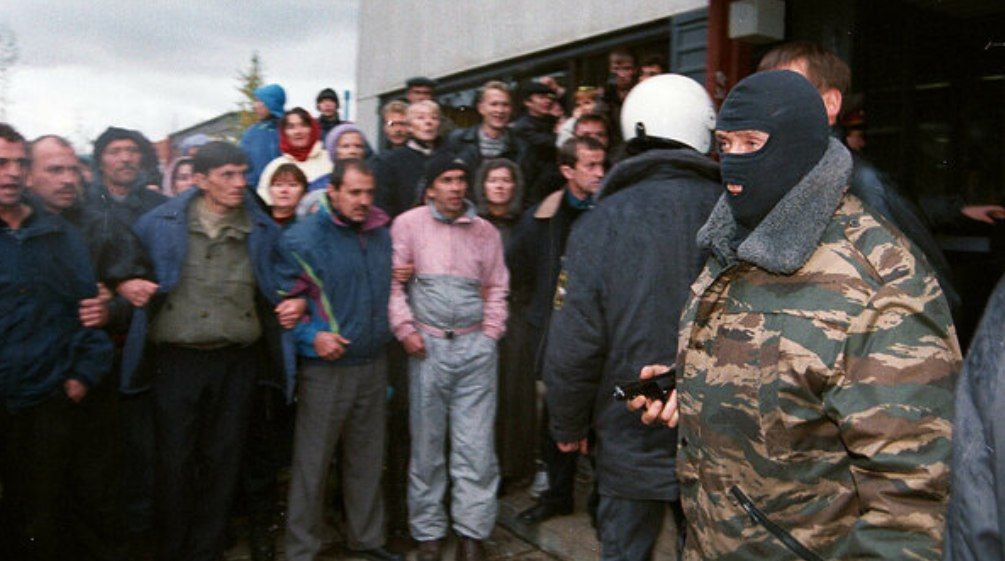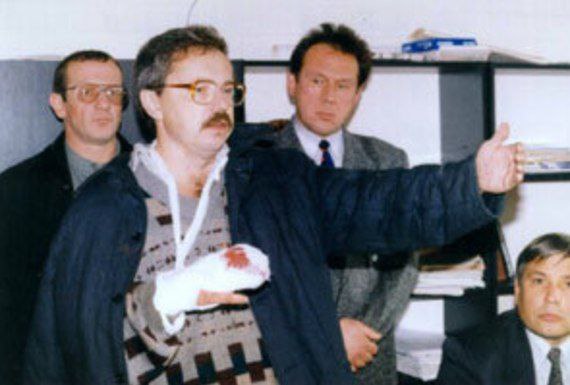Lessons from the workers’ occupation of Vyborg’s factory in Russia

Written by Antijob media in Russian. The current English-language translation was done by Russian-speaking comrade for TRISE.
Not that long ago we wrote about the occupation of mills and factories in Argentine, but as our subscribers rightly noted something similar – though unfortunately on a smaller scale and with its own particularities – happened in Russia’s modern history as well.
At the end of the 90s, there were several attempts by the workers to take, in various degrees, the control of their enterprises. We will l tell you the story of the most successful of them – Vyborg’s pulp and paper mill (Vyborg PPM) – and we will try to compare it to the story of Argentinian worker’s occupation of the ceramic factory Zanon.
So, Vyborg’s Pulp and Paper Mill (PPM) is an enterprise located in the village Sovetski, not far from Vyborg. At the end of the 90s it employed more than 2000 workers and effectively was the city-forming enterprise. There was hardly any other job. In the 90s the enterprise was privatized and through a simple scheme of counterparties, that were supplying raw materials at inflated prices and buying the products at low prices, was led to bankruptcy. The beneficiaries of this whole process were obviously the owners of the enterprise. They were outrageously pursuing a simple goal – to pump funds into their pockets and then disappear, as if they never existed.
Back then, there were numerous similar stories – capitalists preferred to play it short, scoop the jackpot and move on to new goals. Workers on the other side were left for months, even years, without salaries and later without a job since the bankrupted enterprise would close and its assets, including the expensive equipment, would be sold off. That would have been the case here as well, but it followed a different scenario.
“Optimization” 90s style
The owners of the new firm “Nimonor Investments”, that bought Vyborg’s PPM, wanted to repurpose it into sawmill, firing that way half of the working collective. They replaced mill’s security with their own so that later they could easily start the selling off of the “unnecessary” assets, but mill’s collective formed people’s squad, witch would guard the enterprise alongside the owners’ security. Then, as people weren’t receiving salaries for moths, they organized a general assembly and established a trade union comprised of workers and local municipal deputies. They, we believe, should be mentioned separately.
Undoubtedly, as it is now, there were many among the deputies who were whether businessmen themselves or were representing the interest of a business. But back then, the notorious power vertical was not build yet, municipal elections were not completely reduced to a sham and therefore among the deputies could be found people not integrated in the system and ready, one way or the other, to fight it. That was the case of some of the municipal deputies. To some extent, the existence of such people was good. It’s quite likely (but not necessarily) that without them workers wouldn’t be able to fight the owners as successfully. But here the huge contrast with the situation of the occupied Argentinian factory becomes evident. There, workers were putting forward leaders from their own midst and even though there were obviously outside activists that were helping them, firstly they were not deputies, and secondly, the main organizational work was carried out by the workers themselves. And even more important, in most of the occupied enterprises the practice of regular workers’ assemblies for addressing of production and management issues was introduced. There was nothing similar to that at Vyborg’s PPM. Unfortunately, in Russia the tendency to rely on people in positions of power turned out to be very persistent. As we will see later, that would end workers’ good beginnings.
So, the union starts its work. It tries to make the government address the issue of workers’ lack of means of subsidence, to force – again thought the government – the owner to comply with the contract by which he obtained the PPM, namely not to repurpose it and to secure all the jobs. When it becomes clear that that is pointless, the union gathers a general conference of mill’s workers on which they decide to launch the production on their own, without the owner. The conference elects a new management and decides to register the mill under a new form of ownership – as owned collectively by its workers (“Vyborg PPM” CJSC). Tax authorities refuse to do so, but workers threaten to block the “Scandinavia” highway that connects Russia with Finland.

(photo) “Tayfun” special forces on the factory’s territory
The fight and the results
The day people came out to block the highway, the issue is getting resolved in less than ten minutes. The enterprise is being registered and the workers’ collective launches the production on Vyborg’s PPM, against the will of its formal owners. In that form, the mill will work for a little less than 2 years (from March of 1998 to January 2000). There will be several failed attempts of raider seizure by the now new owners (the firm Nimonor Investments will sell PPM to Aleksandr Sabadash). During the second attempt the enterprise was raided by the Tayfun commandos. Workers stormed the enterprise and forced the raiders to abandon it. Meanwhile, they were fired upon and several ware wounded. At that point, the discussion was centered on buying guns to protect the mill, but the new owner, after the first failed attempts, starts to act more cunningly.

(photo) Locksmith Aleksandr Ogurtsov got a bullet wound of the right hand
By realizing that he can’t achieve his goals by force, with government’s support he organizes an economic blockade. All the contracts with the PPM were blocked, transportation was not allowed to reach the PPM. Rybinovich, the head of Vyborg’s legislative assembly – who previously supported the workers – and the, linked to him, head of the union Kiryakov sided with the new owners. At the end, it all ended with a banal bribery. The new owner strated paying each worker 1000-1200 rubles for signing an application of their transfer from CJSC “Vyborg PPM” to his firm. Soon, such applications were signed by more than half of the workers.
As we see, the reliance on deputies betrayed the workers. As soon as they were bought, everything collapsed. Similarly to Sabadash, Putin bought off Russia’s working class with “stability” on country scale. At the end, as researches show that his main tools of fighting are the obedience and power.
Well, and what about Argentine? The ceramic factory Zanon (currently FaSinPat) is still under workers’ control. Its occupation gave birth to a whole movement of workers’ self-organization on various enterprises. Thanks to Argentine, we see the fight of labour against Capital. And its outcome is still not predetermined. Meanwhile in our case, let’s put it mildly, things are very different. However, nothing prevents us from learning form the teachings of the past and not to put our fate in others’ hands. We are certain, that soon or later, Russia’s working class will get a chance to correct this mistake. The important thingis not to blow it and not to delegate again the fight for our rights and interests to someone else.
We need your support!

Leave a Reply